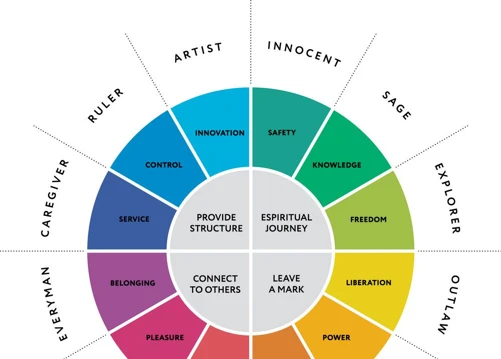Unlocking the Secrets of the Dream World: The Role of Archetypes in Understanding Dreams
Dreams have always fascinated mankind, offering a window into our unconscious mind and the mysterious realms within. But what do these enigmatic visions really mean? How can we decipher the symbolic language of dreams? One powerful framework that can aid us in this exploration is the concept of archetypes. These universal symbols and patterns of behavior, identified by the renowned psychologist Carl Jung, provide invaluable insights into the deeper meanings hidden within our dreams. By understanding and interpreting the archetypal symbols that populate our dreamscapes, we can gain profound self-understanding, unravel the mysteries of our subconscious mind, and embark on a transformative journey of personal growth. Join us as we delve into the fascinating role of archetypes in understanding dreams and unlock the door to a world of untapped wisdom.
What are Archetypes?
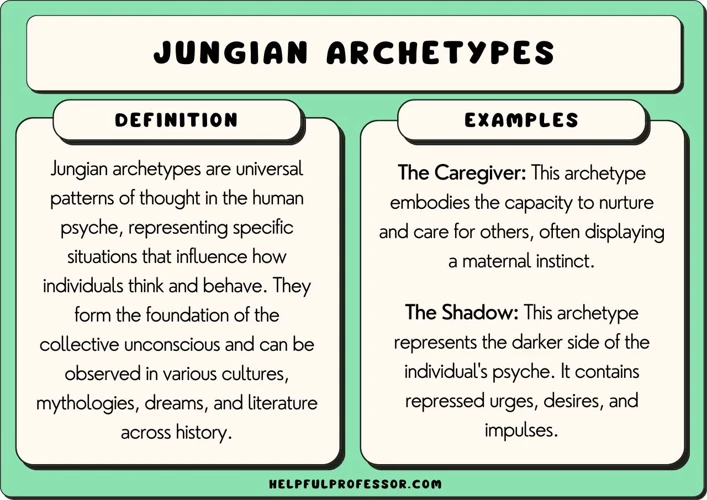
Archetypes are universal symbols and patterns of behavior that exist in the collective unconscious. They are deeply ingrained in the human psyche, transcending cultural and historical boundaries. These archetypal figures and motifs hold immense power and meaning, influencing our thoughts, emotions, and actions on both a conscious and unconscious level. Carl Jung described archetypes as the building blocks of the human mind, representing the fundamental aspects of our shared human experience. They are the recurring themes, images, and characters that emerge in myths, fairy tales, literature, and, most notably, our dreams. These archetypal symbols have an innate ability to evoke powerful emotions and trigger deep-seated memories within us. They serve as a universal language, speaking to the core of our being and providing a framework for understanding the complex workings of our unconscious mind. Exploring the realm of archetypes allows us to tap into the collective wisdom of humanity and gain deeper insights into our dreams and ourselves. Whether it be the wise old sage, the nurturing mother, or the fierce warrior, archetypes are a key to unlocking the hidden layers of our subconscious and unraveling the mysteries of our dreams.
Definition of Archetypes
Archetypes can be broadly defined as universal symbols or patterns of behavior that exist in the collective unconscious. These archetypal images and motifs are deeply embedded in the human psyche, transcending cultural and historical boundaries. They are fundamental aspects of our shared human experience, representing recurring themes, characters, and symbols that emerge in myths, fairy tales, literature, and dreams. These archetypes are not only significant in the realm of dreams but also play a pivotal role in shaping our thoughts, emotions, and actions in our waking lives. They can be seen as primal, instinctual patterns that tap into the core of our being and evoke deep-seated emotions (source). Just as each culture has its own unique symbolism and interpretation of dreams, archetypes too have cultural variations that influence their expressions and manifestations (source). Exploring the rich tapestry of archetypes provides us with a framework for understanding the complexities of our inner selves and the profound symbolism that permeates our dreams.
Carl Jung and the Collective Unconscious
Carl Jung, a pioneering Swiss psychologist, introduced the concept of the collective unconscious and played a crucial role in understanding the significance of archetypes. He believed that the collective unconscious is an inherent part of our psyche, containing a reservoir of ancestral knowledge and universal human experiences. This collective unconscious is the source from which archetypes arise and shape our dreams. Jung argued that these archetypes are not learned but are instead inherited and shared across all cultures and civilizations. They are deeply embedded in our psyche, influencing our thoughts, emotions, and behaviors without our conscious awareness. The collective unconscious serves as a wellspring of wisdom and creativity, providing a vast collection of symbols and images that find expression in our dreams. Through the study of dreams and the analysis of archetypal patterns, Jung proposed that individuals can gain insights into their unconscious desires, fears, and aspirations. He believed that by engaging with this collective unconscious and understanding its archetypal manifestations in our dreams, we can achieve a more balanced and integrated sense of self. Jung’s work has since had a profound impact on fields such as psychology, mythology, and dream analysis, revolutionizing our understanding of the human mind. To delve deeper into the meanings embedded in our dreams and discover the hidden messages within, it is essential to explore the archetypal symbols and themes that permeate our collective unconscious. Understanding the role of archetypes can illuminate the rich tapestry of our dreams and unlock profound personal insights that lead to self-discovery and growth. For further exploration, you can also dive into the fascinating world of common dream themes.
The Significance of Dreams
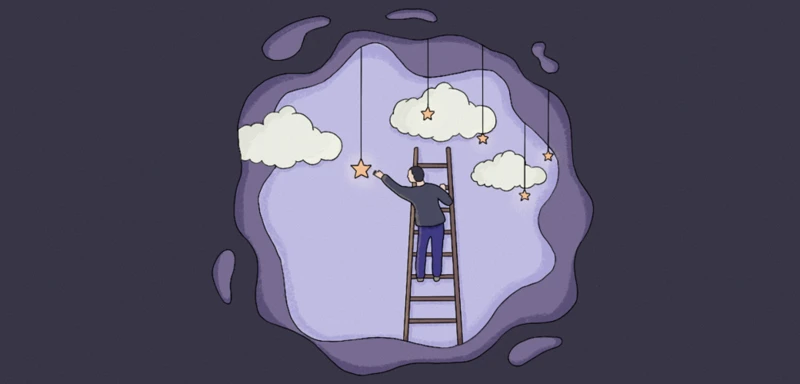
– Why Do We Dream?
Dreams have fascinated humans for centuries, and many theories have sought to explain their purpose. While the exact reasons why we dream are still not fully understood, there are several widely accepted theories. One theory suggests that dreaming is a way for the brain to process and organize information from our daily experiences, helping us make sense of the world. Another theory proposes that dreams serve as a psychological outlet, allowing us to release repressed emotions and desires that we may not express consciously. Dreams also play a vital role in memory consolidation, helping to solidify new information and reinforce learning during sleep. Dreams provide a rich tapestry of mental activity that serves various cognitive, emotional, and psychological functions.
– The Subconscious Mind
Dreams provide a doorway into the realm of the subconscious mind. While awake, our conscious mind is continuously engaged and focused on the external world, but during sleep, the subconscious mind takes center stage. It is here that our deepest desires, fears, and unresolved conflicts reside. Dreams allow these subconscious elements to manifest and communicate with us in symbolic ways. By analyzing the symbols and stories presented in our dreams, we can gain profound insights into our hidden desires, fears, and unresolved issues. Dreams act as a bridge between our conscious and subconscious selves, offering a unique opportunity for self-discovery, growth, and healing.
Understanding the significance of dreams is essential for unlocking their transformative potential. By recognizing the importance of dreams in our lives, we can fully embrace their symbolic language and embark on a journey of self-exploration and self-realization. Through the exploration of dreams, we deepen our understanding of our own psyche and gain valuable insights into our innermost selves. Dreams hold a mirror to our subconscious, reflecting the depths of our emotions, desires, and fears. Embracing the significance of dreams opens up a world of possibilities for personal growth, healing, and self-discovery.
Why Do We Dream?
Dreams have fascinated and puzzled humanity for centuries. Why do we dream? This question has perplexed scientists, psychologists, and philosophers alike. While the exact purpose of dreams remains a subject of debate, there are several prominent theories that seek to explain this phenomenon. One theory suggests that dreams serve as a way for the brain to process and consolidate information gathered throughout the day, helping to strengthen memories and improve learning. Another theory proposes that dreams act as a form of emotional and psychological release, allowing us to work through unresolved conflicts, fears, and desires within the safe confines of our subconscious mind. Additionally, dreams may provide a creative and imaginative outlet, allowing our minds to explore possibilities and simulate experiences that may not be possible in our waking lives. Ultimately, dreams offer a unique glimpse into the inner workings of our minds, providing a rich tapestry of imagery, emotions, and symbolism that can offer valuable insights and self-reflection.
The Subconscious Mind
The subconscious mind is a vast reservoir of thoughts, feelings, and memories that lie beneath the surface of our conscious awareness. It is the realm where dreams originate, serving as a gateway to our deepest desires, fears, and unresolved conflicts. While our conscious mind is responsible for our rational decision-making and day-to-day functioning, the subconscious mind holds hidden truths and influences our behavior in ways we may not fully understand. Carl Jung believed that dreams were manifestations of the subconscious mind, providing a direct line of communication with our innermost thoughts and emotions. Through dreams, the subconscious mind has the ability to express itself through symbols, metaphors, and archetypal imagery. It acts as a reservoir of repressed emotions, unprocessed experiences, and forgotten memories, seeking to bring them to our attention for resolution and integration. By exploring and interpreting the symbols and themes within our dreams, we can gain a deeper understanding of the inner workings of our subconscious mind and uncover profound insights into our psyche. Understanding the subconscious mind is a key component of deciphering the messages and meanings within our dreams, ultimately leading to greater self-awareness and personal growth.
Archetypal Symbols in Dreams
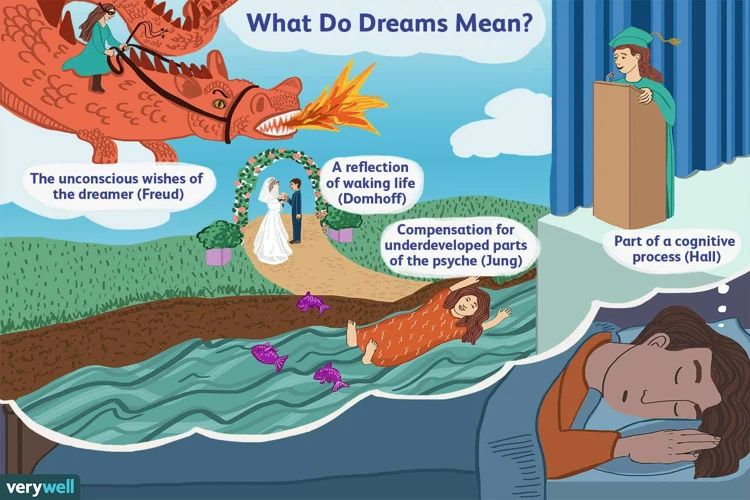
Dreams are rich with archetypal symbols that can provide profound insights into our subconscious minds. These symbols often appear as recurring motifs or characters that carry universal meanings across cultures and individuals. Common archetypal symbols in dreams include animals, such as the wise owl or the cunning fox, which represent instinctual wisdom or slyness, respectively. Other symbols can take the form of objects, like the key, which signifies unlocking hidden potentials or opportunities. Additionally, natural elements such as water, fire, or the sun often hold deep symbolic significance in dreams, reflecting emotions, transformation, or enlightenment. Archetypal characters, like the hero or the villain, embody universal traits and motivations. These symbols serve as a bridge between the conscious and unconscious mind, allowing us to connect with deeper layers of our being and uncover hidden truths. By understanding the meanings behind these archetypal symbols in dreams, we can gain valuable insights into our own inner world and the challenges we may be facing. Whether it is a serpent symbolizing transformation or a labyrinth representing a journey through life, the archetypal symbols that arise in our dreams hold the keys to unlocking profound self-awareness and personal growth.
Common Archetypal Symbols
Archetypal symbols are recurring motifs that appear in dreams and hold universal meanings across cultures and individuals. These symbols tap into our collective unconscious, evoking deep emotions and carrying profound messages. The moon, with its enigmatic presence and ever-changing phases, often represents the cycles of life and the fluctuating nature of our emotions. The snake, a potent symbol associated with transformation, sheds its skin, representing rebirth and renewal. The labyrinth, a complex and winding maze, symbolizes the journey of self-discovery and the search for meaning in life. The hero, depicted as a courageous figure overcoming challenges, embodies our own potential for bravery and triumph. The mask, representing both concealment and revelation, symbolizes our hidden selves and the masks we wear in society. These archetypal symbols, among many others, serve as gateways to understanding the deeper layers of our dreams and unlocking the wisdom hidden within.
Their Meanings in Dreams
Archetypal symbols in dreams carry profound meanings that can provide valuable insights into our inner world. These symbols often appear in our dreams, serving as representations of universal themes and emotions. For example, water is a common archetypal symbol that can be interpreted in various ways depending on the context of the dream. It often signifies the flow of emotions, the unconscious mind, and the depths of our innermost desires and fears. The presence of water in a dream can indicate a need for emotional healing, cleansing, or transformation. Dreams involving animals are also rich in symbolism. Animals represent instinctual and primal aspects of ourselves. For instance, a dream featuring a wolf may symbolize our wild and untamed nature, while a dream about a bird may represent freedom and the desire for spiritual expansion. These archetypal symbols are not fixed in their interpretation and can vary based on personal experiences and cultural influences. It is crucial to consider the entire dream narrative and the emotions evoked during the dream to fully comprehend the individual significance of these symbols. Exploring the meanings of archetypal symbols in dreams encourages a deeper understanding of our subconscious mind and allows us to unravel the hidden messages that our dreams are trying to convey.
Exploring the Shadow Self

The shadow self is a concept that was introduced by Carl Jung as part of his exploration of the human psyche. It refers to the unconscious aspects of our personality that we often repress, deny, or disassociate from. These are the aspects of ourselves that we deem as undesirable, unacceptable, or socially unacceptable. The shadow self represents our hidden fears, desires, and insecurities, as well as our repressed emotions and negative traits. In dreams, the shadow self often manifests through dark and ominous figures, symbolizing the aspects of ourselves that we have yet to acknowledge and integrate. These archetypal symbols can take on various forms such as monsters, villains, or shadowy figures lurking in the shadows. By exploring and confronting the shadow self in our dreams, we can gain valuable insights into our unconscious patterns, unresolved conflicts, and unhealed wounds. The shadow self may reveal the parts of ourselves that need acknowledgment, acceptance, and healing. Through this exploration, we can begin to integrate and embrace our shadow, leading to a greater sense of wholeness and self-awareness. By shining light on our shadow self, we can transform our inner darkness into personal growth and self-empowerment. So, embrace the shadows and embark on a journey of self-discovery through your dreams.
Dark Archetypes and Their Influence
Dark archetypes, also known as shadow archetypes, represent the darker aspects of our psyche that we often repress or deny. These shadow figures embody our hidden fears, desires, and insecurities. They hold immense power over us, influencing our thoughts, emotions, and behavior in ways we may not even be aware of. Examples of dark archetypes can include the villain, the trickster, or the seductress. These archetypes symbolize the parts of ourselves that we dislike or are ashamed of, but they are an essential part of our wholeness and self-discovery. By exploring and acknowledging these shadow archetypes, we can gain a deeper understanding of our own inner conflicts and unresolved issues. Embracing and integrating these dark aspects allows us to bring balance and healing to our psyche, ultimately leading to personal growth and transformation. Understanding and working with these shadow archetypes can be a powerful tool in dream analysis and self-reflection, guiding us towards a more authentic and empowered self.
The Shadow Self in Dreams
In the realm of dreams, the concept of the shadow self takes on a significant role. The shadow self refers to the hidden, darker aspects of our personality that we may consciously or unconsciously reject, repress, or deny. These darker aspects can include our fears, desires, insecurities, and impulses that we find unacceptable or socially undesirable. Carl Jung believed that it is important to acknowledge and integrate the shadow self in order to achieve wholeness and self-acceptance. In dreams, the shadow self often manifests as ominous or threatening figures, symbolic representations of the parts of ourselves that we have disowned. These shadow figures can be perceived as villains, monsters, or even familiar individuals who may carry a sense of unease or fear. Dreams that feature encounters with the shadow self can serve as powerful opportunities for self-reflection and growth. They offer a chance to confront and address our deepest fears and hidden truths. By exploring these dreams and their symbolic representations, we can gain insights into the aspects of ourselves that need attention and healing, enabling us to integrate these shadow aspects into our conscious selves. It is through this process of acknowledging and embracing our shadow self that we can achieve greater self-awareness and personal transformation.
Collective Unconscious and Mythological Archetypes

The collective unconscious is a concept developed by Carl Jung to describe the deepest and most fundamental layer of the human psyche that is shared by all people. It is the reservoir of collective experiences, memories, and knowledge that transcends the individual and is inherited from our ancestors. Within the collective unconscious, we find mythological archetypes – powerful and timeless symbols that are present in the mythologies of different cultures around the world. These archetypes, such as the hero, the trickster, the goddess, and the wise old man, are not only found in dreams but also in ancient stories, folklore, and religious texts. They represent universal motifs that arise from the common human psyche, reflecting essential aspects of the human experience. For example, the archetype of the hero embodies the journey of self-discovery and overcoming obstacles, while the archetype of the trickster represents the disruptive and mischievous nature within us. By recognizing and understanding these mythological archetypes in our dreams, we can gain a deeper insight into our own personal narratives and the collective wisdom of humanity. Exploring the realm of mythological archetypes allows us to connect with the ancient stories and symbols that have shaped human consciousness throughout history, providing us with a rich tapestry of meaning and insight into our dreams.
Universal Archetypes in Mythology
In the vast tapestry of human mythology, certain archetypes emerge as universal across cultures and time. These archetypal figures and themes transcend geographical boundaries and resonate deeply within the human psyche. The trickster, known for its cunning and mischievous behavior, appears in various forms such as Loki in Norse mythology and Hermes in Greek mythology. The hero, brave and self-sacrificing, can be found in the stories of Hercules, Gilgamesh, and countless other heroic figures. The wisdom figure, often depicted as an old sage or mentor, appears as Merlin in Arthurian legends and Gandalf in J.R.R. Tolkien’s mythology. Additionally, the femme fatale represents seduction and danger, with characters like Cleopatra and Salome embodying this archetype. These universal archetypes in mythology serve as a reflection of our collective unconscious, offering insight into our shared human experiences and the timeless patterns that shape our dreams and aspirations. Understanding these archetypal symbols allows us to connect with our ancestral roots and unlock the deeper layers of meaning within our dreams.
Dreams as Personal Myth
Dreams, in their essence, can be seen as personal myths. Just as myths encapsulate universal experiences and convey profound truths, our dreams also have the power to convey personal narratives and deeper meanings unique to each individual. When we explore our dreams through the lens of archetypes, we begin to recognize the recurring themes, characters, and symbols that make up our personal mythology. These mythic elements can shed light on our unconscious desires, fears, and aspirations, offering a glimpse into the stories our psyche is weaving. Each dream becomes a chapter in our personal myth, unfolding a narrative that is deeply woven into the fabric of our being. Through understanding the archetypal patterns and symbols within our dreams, we can uncover the underlying themes that shape our lives and gain a greater understanding of our inner selves. Just like the heroes, villains, and quests found in mythological stories, our dreams provide us with a rich tapestry of imagery and symbolism that speak to the universal human experience. Whether we are traversing unknown landscapes, confronting shadowy figures, or undergoing transformative journeys, these dream narratives hold the potential to guide us towards self-discovery and personal growth. By recognizing our dreams as personal myths, we open ourselves up to the profound wisdom and transformative power they possess.
Personal Archetypes and Self-Discovery
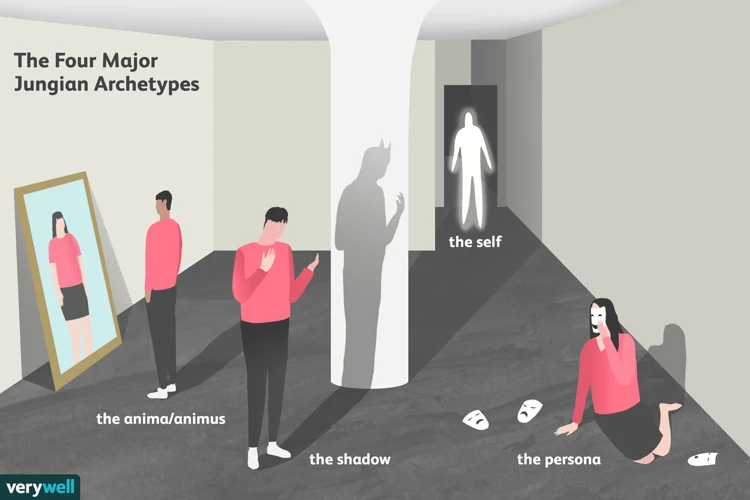
Within the realm of archetypes, there exist personal archetypes that are unique to each individual. These personal archetypes are specific patterns, symbols, or themes that hold personal significance and meaning for an individual’s journey of self-discovery. Unlike universal archetypes, which are shared across cultures, personal archetypes are deeply rooted in an individual’s experiences, memories, and personality traits. Identifying and understanding our personal archetypes can provide profound insights into our strengths, weaknesses, desires, and fears.
To identify personal archetypes, one must engage in deep self-reflection and introspection. Paying attention to recurring symbols, themes, or characters that appear frequently in dreams can be a helpful starting point. Write down these symbols or themes and explore their meanings and associations. Do they represent a part of your personality, a role you play in your life, or a deep longing or fear? Analyzing these personal archetypes can uncover hidden aspects of ourselves that we may have been unaware of.
Self-discovery through personal archetypes goes beyond simply understanding ourselves on a conscious level. It allows us to access the unconscious parts of our psyche, shedding light on our hidden desires, unresolved emotions, and unexpressed potentials. By embracing and integrating our personal archetypes, we can embark on a journey towards self-acceptance, self-empowerment, and self-actualization.
Dreams play a crucial role in the exploration of personal archetypes. They can serve as gateways into the depths of our unconscious, providing vivid imagery and narratives that reflect our innermost thoughts, feelings, and desires. Analyzing the symbols and themes that emerge in our dreams can offer valuable insights into our personal archetypes and guide us towards a deeper understanding of ourselves.
By consciously engaging with our personal archetypes and incorporating their wisdom into our lives, we can experience transformative growth and self-realization. Personal archetypes offer a roadmap for self-discovery, guiding us towards a greater sense of purpose, authenticity, and fulfillment. They tap into the richness of our individuality, reminding us that we are powerful creators of our own stories and that our dreams possess the potential to shape and guide our lives. With self-awareness and a willingness to explore the depths of our psyche, we can unlock the transformative power of personal archetypes and embark on a lifelong journey of self-discovery and self-actualization.
Identifying Personal Archetypes
Identifying personal archetypes is a deeply introspective process that requires self-reflection and self-awareness. These are the archetypal patterns that resonate with us on a deeply personal level, reflecting our unique life experiences, values, and aspirations. To identify personal archetypes, one must pay attention to recurring themes, symbols, and characters that appear in their dreams and daily life. These archetypes can manifest as an embodiment of our desires, fears, or strengths. Through journaling, meditation, and introspection, we can begin to recognize the patterns and archetypal energies that shape our existence. It may be the nurturing caregiver, the adventurous explorer, or the creative artist. As we uncover our personal archetypes, we gain a deeper understanding of ourselves, our motivations, and our journey in life. This self-awareness allows us to align with our true selves and harness the power of these archetypal energies for personal growth and transformation.
Self-Understanding Through Dreams
Dreams are not just random images and stories that play out in our minds while we sleep; they hold a profound significance in our journey of self-discovery and self-understanding. Through our dreams, we can gain insights into our deepest desires, fears, and unresolved emotions. The subconscious mind is often revealed in our dreams, providing a glimpse into the hidden aspects of ourselves that we may not be fully aware of during our waking hours.
Dreams act as a bridge between our conscious and unconscious minds, allowing us to explore and process our emotions, experiences, and beliefs on a deeper level. They offer a safe and non-judgmental space where our true desires and fears can be expressed freely. When we pay attention to our dreams and engage in dream analysis, we can uncover valuable information about ourselves in ways that may not be accessible in our waking life.
By reflecting on the symbols, themes, and emotions present in our dreams, we can decipher the underlying messages and meanings they hold. Personal archetypes often emerge in our dreams, representing different aspects of ourselves and our personality. These archetypes can manifest as characters, animals, or objects that hold personal significance for us.
Through analyzing and exploring these archetypal symbols and their interactions in our dreams, we can gain a deeper understanding of our own psyche and the underlying patterns that influence our thoughts, emotions, and behaviors. Dreams offer a direct pathway to our subconscious mind, providing insights into unresolved conflicts, unexpressed desires, and untapped potential.
Self-understanding through dreams is a continuous process of self-reflection and interpretation. It requires an open and curious mindset, as well as a willingness to explore the deeper layers of our consciousness. By engaging in practices such as dream journaling, meditation, and dream interpretation techniques, we can cultivate a deeper connection with our dreams and harness their transformative power to enhance our self-awareness and personal growth.
Dreams serve as a powerful tool for self-understanding. They provide a unique window into our subconscious mind, offering valuable insights and revelations about ourselves. By delving into the symbolism and meanings behind our dreams, we can unlock hidden truths, uncover unresolved emotions, and embark on a journey of self-discovery. Embracing our dreams as a source of wisdom and guidance can lead to profound personal growth and transformation.
Lucid Dreaming and Archetypal Encounters

Lucid dreaming is a remarkable state of consciousness where the dreamer becomes aware that they are dreaming, allowing them to actively participate in and manipulate the dream narrative. This heightened level of awareness opens up opportunities for profound encounters with archetypal figures in the dream world. When lucid, dreamers can consciously engage with these powerful symbols and engage in meaningful interactions with them. Archetypal encounters in lucid dreams can lead to transformative experiences and personal growth.
- Interaction with Archetypes in Lucid Dreams: In a lucid dream, individuals can intentionally seek out specific archetypal figures or simply allow them to spontaneously appear. The dreamer may choose to engage in conversation, seek guidance, or even embody an archetype themselves. These interactions can provide unique insights, perspectives, and healing that can extend beyond the dream state.
- Enhancing Self-Growth and Healing: Lucid dreaming offers a profound platform for exploring and working with archetypes to facilitate personal growth and healing. By actively engaging with archetypal figures, individuals can gain a deeper understanding of certain aspects of their personality, confront unresolved issues, and access inner wisdom and guidance. The transformative potential of these encounters can have a profound impact on self-awareness and psychological well-being.
Lucid dreaming empowers individuals to consciously connect with archetypes and harness their transformative potential. This unique dream state allows for direct engagement with the symbols and energies that shape our unconscious mind, providing an opportunity for self-discovery, personal exploration, and spiritual development. Through lucid dreaming, we can unlock the doorway to archetypal encounters and embark on a journey of self-transformation.
Interaction with Archetypes in Lucid Dreams
During a lucid dream, where the dreamer is aware of their dreaming state, there is a unique opportunity for a profound interaction with archetypes. In these heightened dream states, individuals have the ability to consciously engage with the symbolic figures and themes that manifest within their dreams. Whether it is encountering a wise mentor, a mythical creature, or a powerful archetype from their personal mythology, lucid dreaming allows individuals to actively explore and engage with these archetypal energies. This interaction can involve seeking guidance, seeking healing, or even engaging in dialogue or creative endeavors with these symbolic manifestations. Lucid dreaming provides a remarkable platform for individuals to deepen their understanding of the archetypes within their own psyche and access the transformative power that these symbols hold. Through this experience, individuals can tap into the collective unconscious and unlock new levels of self-growth and self-discovery.
Enhancing Self-Growth and Healing
Enhancing self-growth and healing through the exploration of archetypal encounters in lucid dreams is a profound and transformative practice. When we become aware and conscious within our dreams, we have the opportunity to engage with archetypes on a deeper level. These interactions with archetypal figures can serve as catalysts for personal growth and healing. In the lucid dream state, we can actively choose to confront our fears, delve into unresolved issues, and even seek guidance from wise archetypal beings. By consciously engaging with the archetypes that appear in our dreams, we tap into the innate wisdom and healing potential they embody. A lucid dream encounter with the shadow archetype, for example, allows us to explore and integrate our hidden and repressed aspects, leading to greater self-awareness and personal integration. Similarly, encounters with nurturing or healing archetypes can provide comfort, guidance, and a sense of wholeness. Lucid dreaming offers a unique opportunity to actively work with archetypes, harnessing their transformative power for self-growth and healing in ways that can be profound and life-changing.
The Collective Unconscious and Dream Interpretation
The collective unconscious plays a crucial role in dream interpretation. According to Carl Jung, the collective unconscious is a vast reservoir of knowledge and experiences shared by all human beings. It is the source of archetypes and serves as a bridge between the personal and the universal. When we dream, we tap into this collective unconscious and encounter archetypal images and symbols that hold deep meaning. Dream interpretation involves understanding the messages and insights that emerge from this realm. By analyzing the archetypal elements within our dreams, we can gain valuable insights into our unconscious desires, fears, and conflicts. The collective unconscious provides a rich tapestry of symbols and motifs that can guide us through the labyrinth of dreams. Utilizing archetypes for dream analysis allows us to go beyond surface-level interpretations and access the deeper layers of our psyche. By recognizing and understanding the archetypal patterns at play in our dreams, we can unravel the hidden messages and gain a deeper understanding of ourselves and our inner world. Dream interpretation through the lens of the collective unconscious provides a powerful tool for self-exploration, personal growth, and healing. It allows us to tap into the collective wisdom and universal truths that underlie our dreams, leading us on a transformative journey of self-discovery.
Utilizing Archetypes for Dream Analysis
One powerful way to gain deeper insights into the meaning of dreams is by utilizing archetypes for dream analysis. By recognizing and interpreting the archetypal symbols that appear in our dreams, we can uncover layers of hidden meaning and gain a greater understanding of ourselves and our experiences. Utilizing archetypes in dream analysis involves identifying the specific archetypes present in the dream and exploring their associated symbolism. For example, encountering the archetype of the “Hero” in a dream may suggest that the dreamer is facing a challenge or embarking on a personal journey of growth and transformation. By delving into the characteristics, emotions, and behaviors exhibited by these archetypal figures, we can uncover valuable insights about our own psyche and the messages our dreams are trying to convey. Through this process of utilizing archetypes for dream analysis, we can unlock the wisdom and guidance that our dreams offer, ultimately leading to self-discovery, healing, and personal growth.
Interpreting Dreams with Archetypal Frameworks
Interpreting dreams with archetypal frameworks allows us to delve into the deeper layers of meaning within our dreams and gain a profound understanding of ourselves. By analyzing the archetypal symbols, themes, and characters that appear in our dreams, we can unravel the messages and insights that our subconscious is trying to communicate. One approach to interpreting dreams with archetypal frameworks is to identify the dominant archetypes present. Archetypal figures such as the Hero, the Wise Old Man/Woman, or the Trickster often make appearances in our dreams, offering guidance or posing challenges. By recognizing these archetypes and understanding their roles and characteristics, we can uncover the underlying themes and messages in our dreams. Another method is to analyze the symbolic elements in our dreams and connect them to archetypal meanings. For example, encountering water in a dream may symbolize emotions and the depths of the unconscious, linking it to the archetype of the Deep Sea. By examining the relationship between these symbols and archetypes, we can uncover the hidden meanings and messages that reside within our dreams. It is important to remember that archetypal interpretations are deeply personal and subjective. Each individual may have their own unique relationship with the archetypes, influenced by personal experiences, cultural background, and psychological factors. Thus, while there are general guidelines and frameworks for interpreting dreams using archetypes, it is ultimately up to the dreamer to explore and discover what resonates with them on a personal level. The process of interpreting dreams with archetypal frameworks can be a transformative and enriching experience, providing profound insights into our inner world and guiding us on a path of self-discovery and growth.
Conclusion
In conclusion, understanding the role of archetypes in interpreting dreams opens up a gateway to profound self-discovery and personal growth. Archetypes are powerful symbols and patterns of behavior that exist in the collective unconscious, transcending cultural and historical boundaries. Carl Jung’s concept of archetypes provides a framework for interpreting the symbolic language of dreams and tapping into the deeper realms of our unconscious mind. By recognizing and deciphering archetypal symbols in our dreams, we can gain valuable insights into our emotions, desires, and fears. Moreover, exploring archetypes allows us to connect with universal themes and tap into the collective wisdom of humanity throughout time. This understanding not only deepens our understanding of ourselves but also enhances our ability to navigate life’s challenges and fulfill our true potential. So, embrace the archetypal symbols that populate your dreams, embark on a journey of self-discovery, and unlock the hidden wisdom of your unconscious mind.
Frequently Asked Questions
1. What is the significance of archetypes in dream interpretation?
Archetypes provide a framework for understanding the symbolic language of dreams. They help us uncover hidden meanings and gain insights into our subconscious mind.
2. How do archetypes influence our dreams?
Archetypes appear in dreams as symbolic figures or motifs that represent universal themes and patterns of behavior. They evoke emotions, memories, and unconscious aspects of our psyche.
3. Can archetypal symbols in dreams have different meanings for different individuals?
Yes, the meanings of archetypal symbols can be influenced by personal experiences and cultural backgrounds. While there are universal associations, the interpretation can vary from person to person.
4. Are there common archetypal symbols found in dreams?
Yes, some common archetypal symbols in dreams include the shadow, the hero, the trickster, the mother, the wise old man/woman, and the anima/animus.
5. How can exploring the shadow self in dreams contribute to personal growth?
Exploring the shadow self in dreams helps us understand and integrate our hidden, repressed, or undesirable aspects. By embracing these aspects, we can achieve wholeness and personal growth.
6. Are there archetypes that appear specifically in mythological stories?
Yes, there are universal archetypes seen in mythological stories such as the hero’s journey, the mentor, the trickster, the goddess, and the underworld journey.
7. Can dreams be considered personal mythology?
Yes, dreams often contain personal symbols and narratives that reflect our unique experiences and beliefs. They can be seen as a personal mythology, offering insights into our inner world.
8. How can identifying personal archetypes in dreams help with self-discovery?
Identifying personal archetypes in dreams allows us to recognize recurring patterns and themes in our lives. This self-awareness can lead to deeper understanding and self-discovery.
9. What is the role of lucid dreaming in encountering and interacting with archetypes?
Lucid dreaming provides an opportunity to consciously engage with archetypal figures in dreams, allowing for direct interaction, guidance, and deeper exploration of the self.
10. How can utilizing archetypes in dream analysis enhance the interpretation process?
Utilizing archetypes in dream analysis provides a structured framework and a common language for interpreting dreams. It helps to uncover deeper meanings and insights that may be otherwise overlooked.

